Uninstall .[mrpeterson@cock.li].GFS (GEFEST RANSOMWARE) from Chrome : Abolish .[mrpeterson@cock.li].GFS (GEFEST RANSOMWARE)
Have a look at .[mrpeterson@cock.li].GFS (GEFEST RANSOMWARE) related similar infections| Browser Hijacker | FreeCause Toolbar, Qfind.net, Get-amazing-results.com, Online-malwarescanner.com, Compare.us.com, Malwareurlirblock.com, Search-fever.com, Beamrise Toolbar and Search, Atotalsafety.com |
| Ransomware | .ecc File Extension Ransomware, Mobef Ransomware, CryptoFortress, PowerLocky Ransomware, Help_you@india.com Ransomware, XCrypt Ransomware, APT Ransomware, Shark Ransomware, Cerber Ransomware |
| Spyware | Spyware.IEmonster.B, VersaSearch, IMDetect, Stealth Website Logger, Trojan.Ragterneb.C, Accoona, SchutzTool, AdwareFinder, Rogue.SpywarePro, Vnbptxlf Toolbar, Adware.RelatedLinks, Tool.Cain.4_9_14, SpySure, SpyPal, Not-a-virus:Server-FTP.Win32.Serv-U.gmh, Backdoor.Servudoor.I, YazzleSudoku, TDL4 Rootkit |
| Adware | Win32/BHO.MyWebSearch, Adware.Rival Gaming, Adware.Download and SA, MXTarget, WeatherScope, Oemji, Syslibie, Softomate.ai, MarketDart, InstallProvider, ZenoSearch.o, WebSavings, NowFind, Coupon Matcher, Adware.GameVance, ZoomEx, DownSeek |
| Trojan | Trojan-Downloader.Tiny.agk, Autorun.ACU, Trojan Horse Generic31.APJE, Injector.gen!AX, Spy.CnsMin.I, Html:source.inf, Trojan.Spy.Ursnif.gen!K, Trojan-Clicker.AA, Trojan Horse Patched_c LYU, Trojan.Peskyspy, RPCC.Payload |
Method 1 : Start Your PC in Safe Mode With Networking
Method 2 : Deleting .[mrpeterson@cock.li].GFS (GEFEST RANSOMWARE) From Control Panel
Method 3 : Stop Related Process To .[mrpeterson@cock.li].GFS (GEFEST RANSOMWARE) From Task Manager
Method 4 : Remove .[mrpeterson@cock.li].GFS (GEFEST RANSOMWARE) From Registry Editor
Method 5 : Remove unwanted extensions, add-ons, plug-ins from Chrome
Method 1 : Start Your PC in Safe Mode With Networking
For Windows XP/Vista/7
- Go to the start menu > choose Restart option.
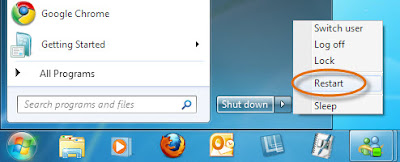
- Start pressing the F8 key once your PC become active.

- It will open the Advanced boot options on screen.

- Select Safe mode with networking > press Enter key.

For Windows 8/10
- From your screen, press power button and click Restart.

- From choose an option Window, select Troubleshoot option.

- Then click on the 'Advanced option.

- After that select Start-up setting option.

- Select Enable safe mode > press the Restart button.

- In order to enable Safe Mode With Networking, Press F5 key.

Method 2 : Deleting .[mrpeterson@cock.li].GFS (GEFEST RANSOMWARE) From Control Panel
Remove .[mrpeterson@cock.li].GFS (GEFEST RANSOMWARE) From Windows 7/Vista
- Open the start menu and then select Control panel.
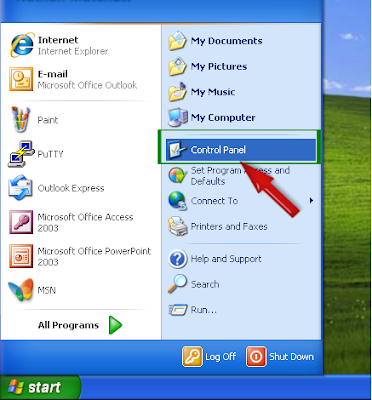
- From the Programs group, select remove a program option.

- Select .[mrpeterson@cock.li].GFS (GEFEST RANSOMWARE) related program > select uninstall/Change.
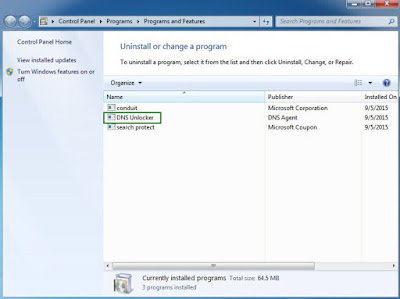
Remove .[mrpeterson@cock.li].GFS (GEFEST RANSOMWARE) From Windows 8
- Press the Win + R buttons at once to open the Run Box.

- In the Run box type Control panel and press Enter key.

- Click remove a program option under the Programs group.
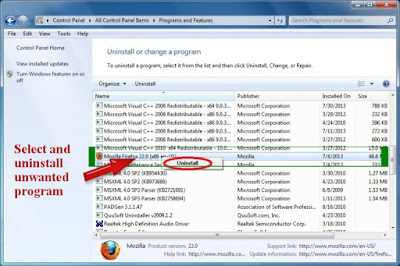
- From installed program select .[mrpeterson@cock.li].GFS (GEFEST RANSOMWARE) > click remove option.

Remove .[mrpeterson@cock.li].GFS (GEFEST RANSOMWARE) From Windows 10
- First click on Start button and select Setting option.

- From the settings menu, select the PC option.

- Now select 'Apps & features' option from the left panel.

- Select keyword} related program and Remove them.

Method 3 : Stop Related Process To .[mrpeterson@cock.li].GFS (GEFEST RANSOMWARE) From Task Manager
- Press the ALT+Ctrl+Del buttons at once.

- Then select the Task manager option from the opened list.
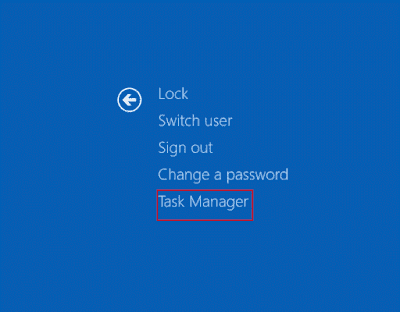
- Select malicious or .[mrpeterson@cock.li].GFS (GEFEST RANSOMWARE) related process.

- Finally click on the End Task button.
Method 4 : Remove .[mrpeterson@cock.li].GFS (GEFEST RANSOMWARE) From Registry Editor
- Press Win + R button together .

- It will open the Run window on screen.
- Type regedit > click on OK button.

- Search for .[mrpeterson@cock.li].GFS (GEFEST RANSOMWARE) related registry and remove them.
HKEY_LOCAL_MACHINESYSTEMCurrentControlSetServicesWpm
HKEY_CURRENT_USERSoftwareMicrosoftInternet ExplorerMain ‘Default_Page_URL’
HKEY_LOCAL_MachineSoftwareClassesWin32.TrojanDropper.Vidro
HKEY_CURRENT_USERSoftwareMicrosoftWindowsCurrentVersionRun ‘.exe’
HKCUSoftwareMicrosoftWindowsCurrentVersionInternet Settingsrandom
HKEY_LOCAL_MACHINESOFTWAREMicrosoftWindowsCurrentVersionrunrandom
HKEY_CURRENT_USERSoftwareMicrosoftWindowsCurrentVersionInternet Settings ‘CertificateRevocation’ = ’0
Method 5 : Remove unwanted extensions, add-ons, plug-ins from Chrome
Remove .[mrpeterson@cock.li].GFS (GEFEST RANSOMWARE) From Internet Explorer
- First start the Internet explorer browser.
- Click on the Gear icon from right-top corner.
- Click on 'Manage add-ons' > select Tool-bars and Extensions tab.
- Search for .[mrpeterson@cock.li].GFS (GEFEST RANSOMWARE) related add-ons > click on 'Disable'
- If add-on can't be deleted then click on remove and click Close.
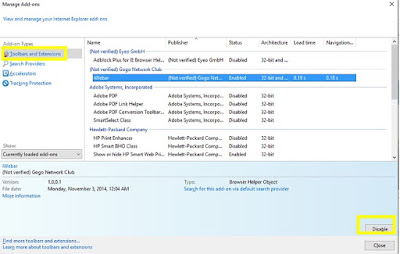
Remove .[mrpeterson@cock.li].GFS (GEFEST RANSOMWARE) From Mozilla Firefox
- Start Mozilla Firefox browser and go to menu
- You will get Add-ons Manager tab on your screen.
- In the add-on manager tab, select Extension or Add-on panel
- Select .[mrpeterson@cock.li].GFS (GEFEST RANSOMWARE) related add-on > click on remove button
- If the pop-up appear, click on Restart now option.

Remove .[mrpeterson@cock.li].GFS (GEFEST RANSOMWARE) From Google chrome
- Start the Google Chrome browser and click on menu button.
- Then click on the More tools and Extensions option
- Find out suspicious extension related to .[mrpeterson@cock.li].GFS (GEFEST RANSOMWARE)
- Finally click on 'Recycle Bin' to Remove unwanted extension.

Remove .[mrpeterson@cock.li].GFS (GEFEST RANSOMWARE) From Microsoft Edge
Because there is no extension in the Microsoft Edge, hence you need to reset the browser settings to Remove .[mrpeterson@cock.li].GFS (GEFEST RANSOMWARE).
- Open Microsoft Edge on your PC.
- Go to right top corner > tap on More (…) icon > go to Settings.
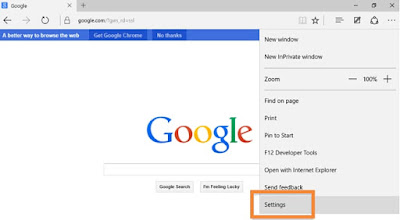
- Now select A specific page or pages from the Open option.
- Select Custom option > enter URL of your desired homepage.
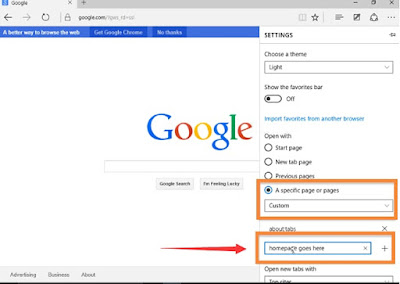

No comments:
Post a Comment